Tree With White Flowers – Many white flowering trees bloom before leaves occur on the branches, making the tree look pure white. It appears vibrant along roadsides and landscapes, especially when they stand next to other trees that have pink or red flowers. White flowering trees are common and are included in a long list of trees such as white dogwood, Adirondack crabapple and sweetbay magnolia.
1. Amelanchier Lamarckii Description
[table id=4 /]
This small tree is ideal for small gardens. It has an attractive multi-stemmed structure during the winter months and provides a mass of white spring blossom, as well as brilliant red/bronze autumn colour. A great all rounder.
Amelanchier lamarckii – Cultivation Notes
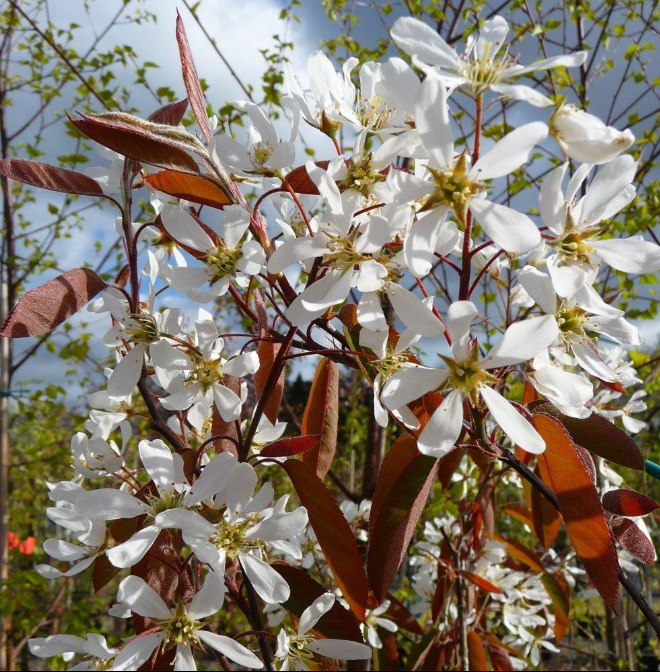

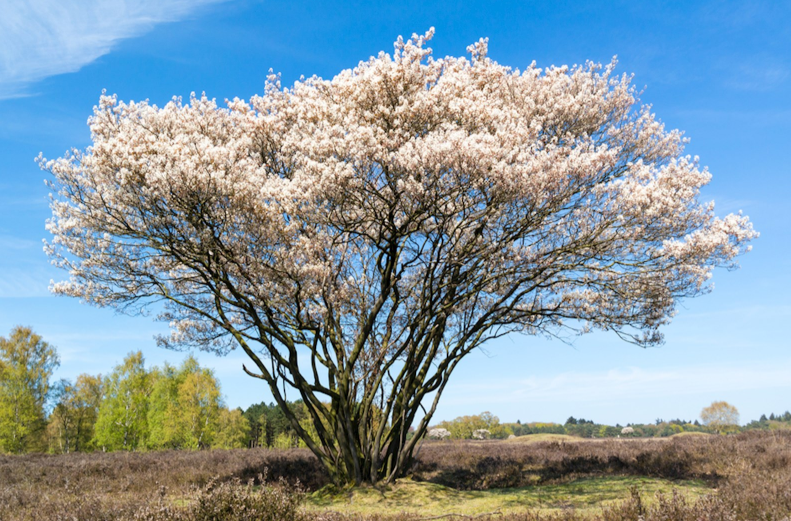
Amelanchier is tough multi-stemmed tree that will tolerate extremes of cold and wet, as well as urban pollution while also give a handsome display of spring blossom and autumn colour. This tree thrives on all neutral/acidic soils – but does not like very poor or chalky soils. Requiring minimum pruning or maintenance this tree will hold an attractive compact multi-stemmed habit, especially in when in full sun. Ideal at the back of a border or as a small specimen.
Strengths, Weaknesses & Design Usage
Strengths of Amelanchier lamarckii:
- Attractive autumn colour
- All round tough plant suitable for problem areas
- Ideal for fast growing screening
- Suitable for container growing
- Fruit/berry producing
- Tolerates full sun and sandy, drought-prone soils
- Tolerates cold exposed locations
- Tolerates heavy clay soils
Design & Plant Use for Amelanchier lamarckii:
- Provides extended interest with blossom, berries and autumn colour
- Ideal flowering shrub for problem clay soils
2. Malus Robusta Description
[table id=5 /]
Malus ‘Red Sentinal’ is grown largely for its impressive shiney red crab fruit which remains on the tree for much of the winter months. It also produces masses of pink white blossom in the spring and is a handsome yet manageable tree for medium sized urban or country garden.
Malus robusta – Cultivation Notes
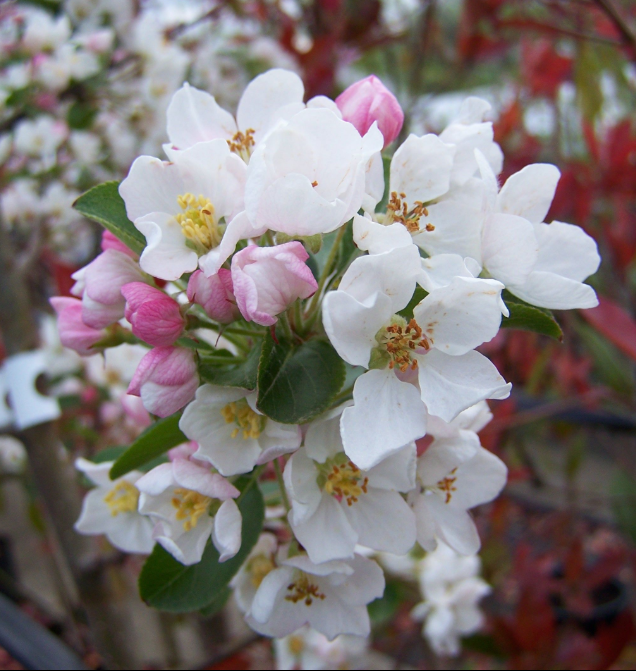
This is a slightly taller growing flowering crab, growing to a maximum height of 8 meters. Red Sentinel will flourish in any reasonable garden soil in full sun or light shade. Malus will tolerate a cold planting location, but avoid planting in windy exposed or very dry areas. Prune to shape during to reduce size in the winter months but avoid excessive pruning.
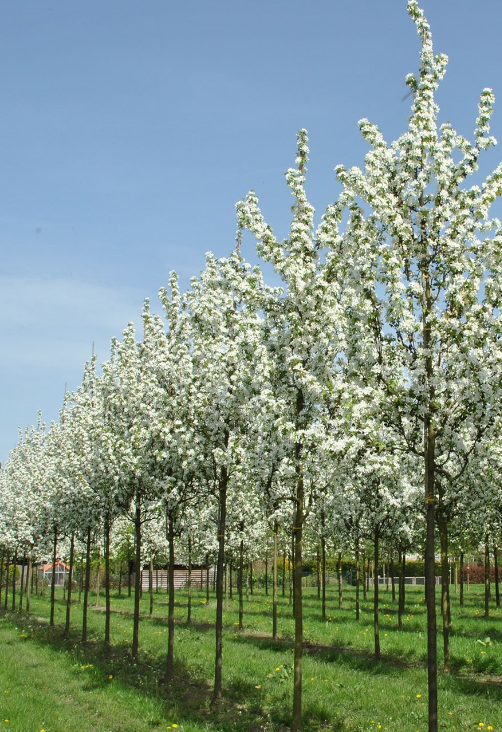
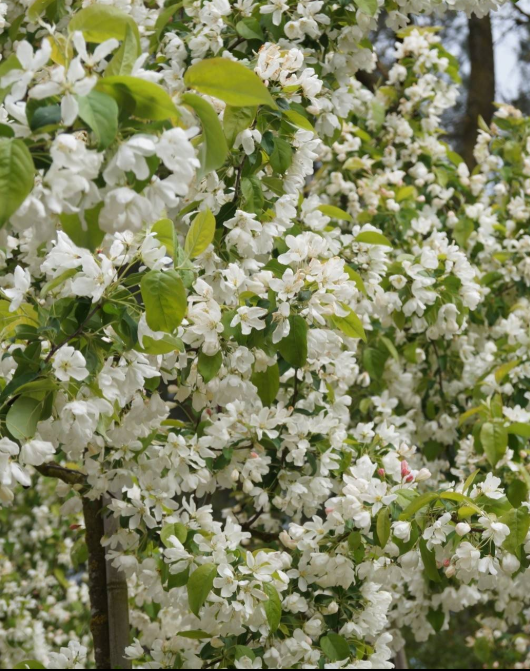
Strengths, Weaknesses & Design Usage
Strengths of Malus robusta:
- All round tough plant suitable for problem areas
- Ideal for fast growing screening
- Fruit/berry producing
- Tolerates full sun and sandy, drought-prone soils
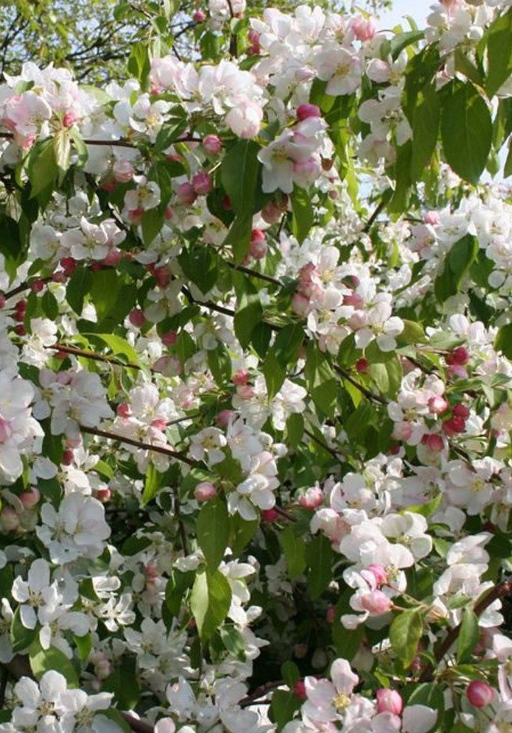
Design & Plant Use for Malus robusta:
- Ideal for informal cottage garden style planting
3. Crataegus monogyna Description
[table id=6 /]
This hardy native is ideally suited for use in informal native hedgerow or as free growing specimen. Producing masses of white spring blossom, followed by red berries – it provides a dense spined network of branches. 6m tall x 4m.
Crataegus monogyna – Cultivation Notes

Plant in any garden soil – even if it is very heavy or prone to water logging. Hawthorn will tolerate very poor soils and is also very hardy. Trim to shape after flowering, removing dead wood. If part of hedge, then prune to shaped after leaf fall.

Strengths, Weaknesses & Design Usage
Strengths of Crataegus monogyna:
- Sun loving drought tolerant plant
- Scented blossom
- Spiney growth can deter unwanted visitors!
- Attracts wildlife to feed or nest
- All round tough plant suitable for problem areas
- Ideal for fast growing screening
- Fruit / berry producing
- Tolerates full sun and sandy, drought-prone soils
- Tolerates cold exposed locations
- Suitable for hedging or topiary
- Tolerates heavy clay soils
Weaknesses of Crataegus monogyna
- Spiney plant – can scratch young children and gardeners!
Design & Plant Use for Crataegus monogyna:
- Spine bearing plant ideal for security hedge
4. Amelanchier Asiatica – Cultivation Notes
[table id=7 /]
Amelanchier is tough multi-stemmed tree that will tolerate extremes of cold and wet, as well as urban pollution while also give a handsome display of spring blossom and autumn colour. This tree thrives on all neutral / acidic soils – but does not like very poor or chalky soils. Requiring minimum pruning or maintenance this tree will hold an attractive compact multi-stemmed habit, especially in when in full sun. Ideal at the back of a border or as a small specimen.
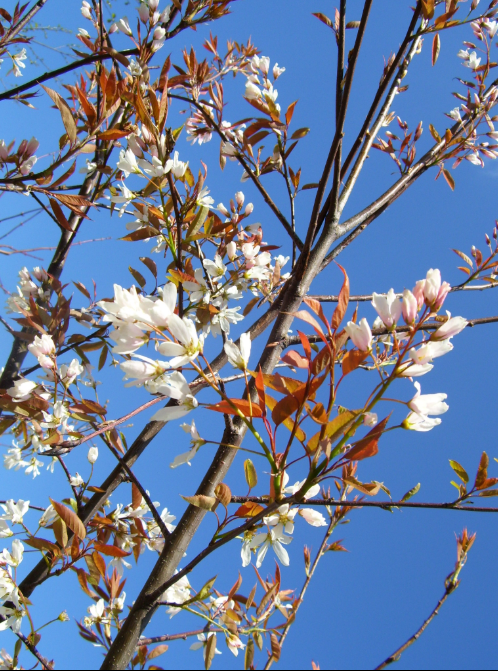
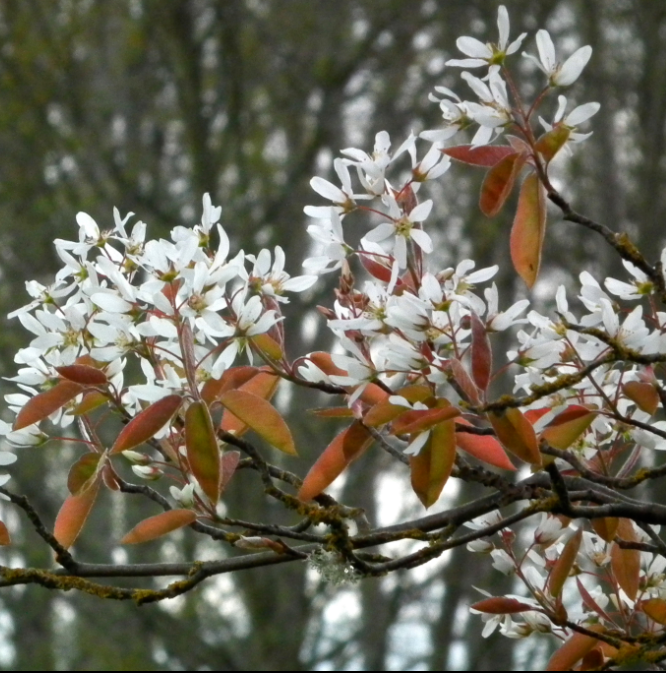
Strengths, Weaknesses & Design Usage
Strengths of Amelanchier asiatica:
- Attractive autumn colour
- All round tough plant suitable for problem areas
- Ideal for fast growing screening
- Architectural plant – ideal as a ‘stand out’ plant
- Fruit / berry producing
- Tolerates full sun and sandy, drought-prone soils
- Tolerates cold exposed locations
- Tolerates heavy clay soils
Design & Plant Use for Amelanchier asiatica:
- Provides extended interest with blossom, berries and autumn colour
- Ideal flowering shrub for problem clay soils
